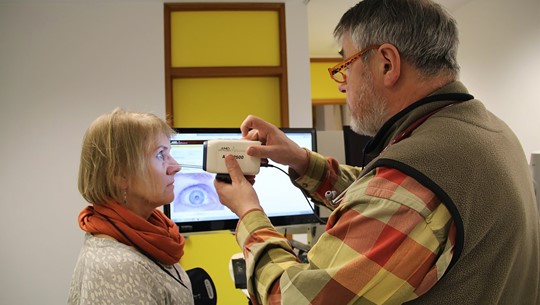Since 2013, specialized telemedicine equipment has been available at the health clinic in Kirkjubæjarklaustur, with digital HD cameras for inspection of the ears, throat and eyes. A vital signs monitor, ECG, respiratory monitor, dermatology camera and digital stethoscope also form part of the solution. The equipment makes it possible for the nurse at the clinic to connect with a physician for observation and diagnosis purposes. The goal was to increase the efficiency and availability of health care in the area and bring specialized care closer to rural residents.
Some of the main effects from the solution are increased availability of health care that was not previously available, including specialized health care, empowerment of healthcare workers in the district and a reduction in travel expenses.
Citizens and healthcare workers in the South healthcare district, Iceland. It is not yet possible to extract data from the system in order to establish who is using the service. The equipment is used for all age groups.
 Distance treatment
Counseling via online tools with associated treatment or own treatment.
Distance treatment
Counseling via online tools with associated treatment or own treatment.
 Distance monitoring
Social care remotely with sensors, cameras, reminders and data collection.
Distance monitoring
Social care remotely with sensors, cameras, reminders and data collection.
 Distance meetings
Close care concepts that move the point of healthcare closer or into the citizens' own homes.
Distance meetings
Close care concepts that move the point of healthcare closer or into the citizens' own homes.
 New distance-spanning solutions
New innovative solutions, new national infrastructure for digital services and service models where citizens can take greater responsibility.
New distance-spanning solutions
New innovative solutions, new national infrastructure for digital services and service models where citizens can take greater responsibility.
 Show all solutions
Show solutions from all four categories
Show all solutions
Show solutions from all four categories
